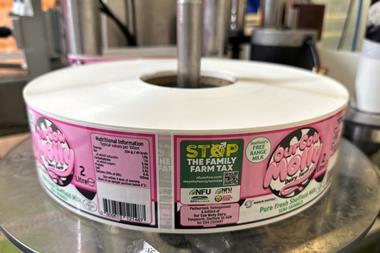Development work has recently commenced on a new 72,500 sq ft Asda store in Folkestone. This new unit will be the first Asda store to trade with the majority of its food and non-food offer on the first level. On the ground floor will be a 13,500 sq ft George store.
The scheme is due for completion by Christmas 2006. However, before this new store opens, it is possible to predict the impact it will have on local shopping patterns.
CACI suggests that Tesco and Sainsbury should be preparing, as these grocers will suffer significant impacts. Sainsbury could feel a combined impact of £314,980 from its two Folkestone stores and Tesco could also lose £184,991 per week. Other fascias on the doorstep include Safeway and Lidl.
CACI predicts that the local demographics should assist Asda in its quest to become a successful player here.
The most dominant Acorn group is Aspiring Singles, which makes up 20% of the new Folkestone catchment. However, this group is typically happy to shop in all of the big four supermarkets.
It is the second most dominant Acorn group, the Blue Collar Roots, that typically shops in Asda. It makes up about 18% of the catchment. Attracting the Blue Collar Roots will be Asda’s best chance to steal large amounts of expenditure from Sainsbury and Tesco.
The third most dominant Acorn group is Prudent Pensioners (12%). As this segment of the population tends to be less mobile, it benefits from the town centre Sainsbury’s and should make full use of the new Asda. Tesco will feel some impact but its store is located out of town and so should still be able to retain mobile family groups.
CACI predicts that, despite the large new supermarket, Tesco will still remain a dominant player in the Folkestone Asda catchment.
Asda should be able to achieve a market share of around 36% but Tesco will still be able to retain a share of around 34%.
This will probably leave Sainsbury with a share of around 16%, with 14% going to other grocers nearby such as Waitrose and Morrisons.
Tesco and Sainsbury have the best correlations to the demographic picture.
However, as a result of the wide mixture of demographic groups in the catchment, the overall demographic fits for all grocers are fairly low.
Each grocer will have to present an offer in which to attract its key groups. It is also worth noting that the Safeway brand has a stronger fit to the local demographics than the Morrisons fascia and has yet to be converted.
This new scheme is set to extend the range and offering within Folkestone and will create a very competitive marketplace with all top four grocers soon to be present.
The scheme is due for completion by Christmas 2006. However, before this new store opens, it is possible to predict the impact it will have on local shopping patterns.
CACI suggests that Tesco and Sainsbury should be preparing, as these grocers will suffer significant impacts. Sainsbury could feel a combined impact of £314,980 from its two Folkestone stores and Tesco could also lose £184,991 per week. Other fascias on the doorstep include Safeway and Lidl.
CACI predicts that the local demographics should assist Asda in its quest to become a successful player here.
The most dominant Acorn group is Aspiring Singles, which makes up 20% of the new Folkestone catchment. However, this group is typically happy to shop in all of the big four supermarkets.
It is the second most dominant Acorn group, the Blue Collar Roots, that typically shops in Asda. It makes up about 18% of the catchment. Attracting the Blue Collar Roots will be Asda’s best chance to steal large amounts of expenditure from Sainsbury and Tesco.
The third most dominant Acorn group is Prudent Pensioners (12%). As this segment of the population tends to be less mobile, it benefits from the town centre Sainsbury’s and should make full use of the new Asda. Tesco will feel some impact but its store is located out of town and so should still be able to retain mobile family groups.
CACI predicts that, despite the large new supermarket, Tesco will still remain a dominant player in the Folkestone Asda catchment.
Asda should be able to achieve a market share of around 36% but Tesco will still be able to retain a share of around 34%.
This will probably leave Sainsbury with a share of around 16%, with 14% going to other grocers nearby such as Waitrose and Morrisons.
Tesco and Sainsbury have the best correlations to the demographic picture.
However, as a result of the wide mixture of demographic groups in the catchment, the overall demographic fits for all grocers are fairly low.
Each grocer will have to present an offer in which to attract its key groups. It is also worth noting that the Safeway brand has a stronger fit to the local demographics than the Morrisons fascia and has yet to be converted.
This new scheme is set to extend the range and offering within Folkestone and will create a very competitive marketplace with all top four grocers soon to be present.



















No comments yet